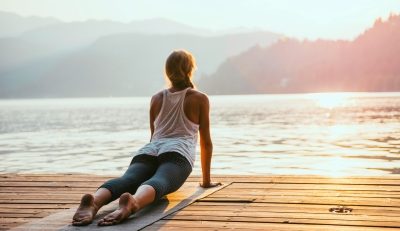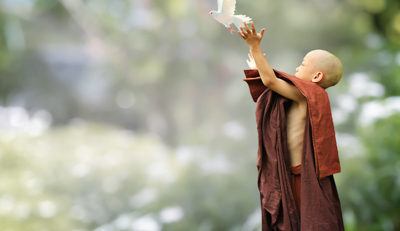Vinyasa yoga – the symphony of breath and movement
Vinyasa yoga is a dynamic style of yoga that focuses on the fluid connection between movement and breath. The term “vinyasa” comes from Sanskrit and means “movement with intent”. In practice, this means that each movement is performed in harmony with breath. Vinyasa practice typically include asanas (poses) that flow into smooth sequences, with the rhythm of the practice dictated by the breath. Now that we know what is Vinyasa yoga, let’s take a look at its three main pillars, benefits, and who is this style of yoga suitable for.
3 pillars of Vinyasa yoga aka Tristhana
Vinyasa yoga is based on three essential pillars known as Tristhana. These pillars form the foundation of this dynamic practice.
- Asana: Asanas are the individual physical positions. Each asana has its purpose and specific benefits and is connected to the previous and following position. The fluid flow of these asanas is a key characteristic of Vinyasa.
- Breath: Udjayi breath is often practiced, which helps maintain rhythm and focus during the exercise. Proper breathing technique support relaxation and a deeper experience. The Udjayi breath, through a slightly narrowed vocal cord opening, warms the body and encourages better performance.
- Drishti: Drishti is the point or gaze where we direct our attention. This important pillar aids concentration and stability. Drishti might be the tip of the nose or a point in front of us.
Benefits of Vinyasa yoga
Vinyasa yoga offers a range of physical and mental benefits:
- Improved Flexibility: Regular practice helps increase flexibility and expand the range of motion.
- Muscle Strengthening: Vinyasa includes various strengthening exercises that build muscle mass and tone the entire body.
- Increased Endurance: The dynamic nature of the classes enhances cardiovascular fitness and overall stamina.
- Stress Relief: The combination of movement and breath contributes to stress reduction and improved mental health.
- Enhanced Concentration: Focusing on the synchronization of breath and movement promotes mindfulness and improves concentration.
Who should do Vinyasa
Vinyasa yoga, with its pace and fluidity, is a great way to incorporate playfulness and tempo into your practice. In today’s fast-paced world, this form of yoga helps us to let go and focus inwards. It is also a popular practice amongst us who like more dynamic exercises. The combination of movement and breath, along with the pace of practice, serves as a great way to “switch off,” calm the mind, and maintain concentration. However, due to the smooth transitions between asanas with limited opportunities for explanation, Vinyasa yoga is best suited for those who already have a basic understanding of how to perform poses correctly. Hatha yoga is a great way to master these fundamentals.
What to bring to a Vinyasa yoga class
The faster pace of Vinyasa yoga necessitates appropriate equipment:
- Anti-slip Yoga Mat: The cardio aspect of Vinyasa yoga often leads to sweating, so you’ll want a mat that won’t slip under your hands. Suede or cork mats are ideal for dynamic workouts and hot yoga. Avoid foam mats, as their water-resistant properties make them slippery.
- Water bottle: Hydration is key, especially during more dynamic classes. Keep a reusable water bottle at hand to have a sip of water during breaks and after class.
- Sports towel: A high-quality absorbent sports towel will help soak up sweat, keeping you and your mat dry. You can also use it in the shower after the class.
- Comfortable Clothing: Elastic and breathable clothing that allows for free movement is ideal for Vinyasa yoga.
- Positive Attitude: Bring an open mind and a willingness to explore new poses and techniques. Vinyasa yoga is about personal development and the joy of movement.
The three pillars of Vinyasa yoga provide for a dynamic practice that not only strengthens the body but also contributes to inner peace and mental well-being. The fluid nature of Vinyasa is a great way to inject a new joy and playfulness into your practice. Just like with other forms of exercise, it is important to find an instructor whose style and approach resonate with you and who can guide you on the right path.







Leave a Reply